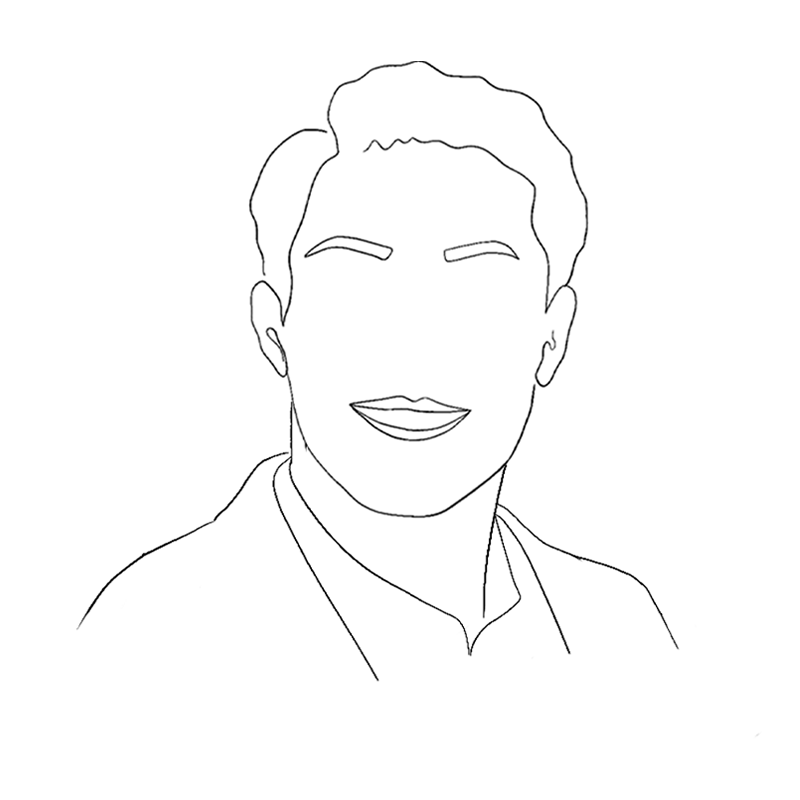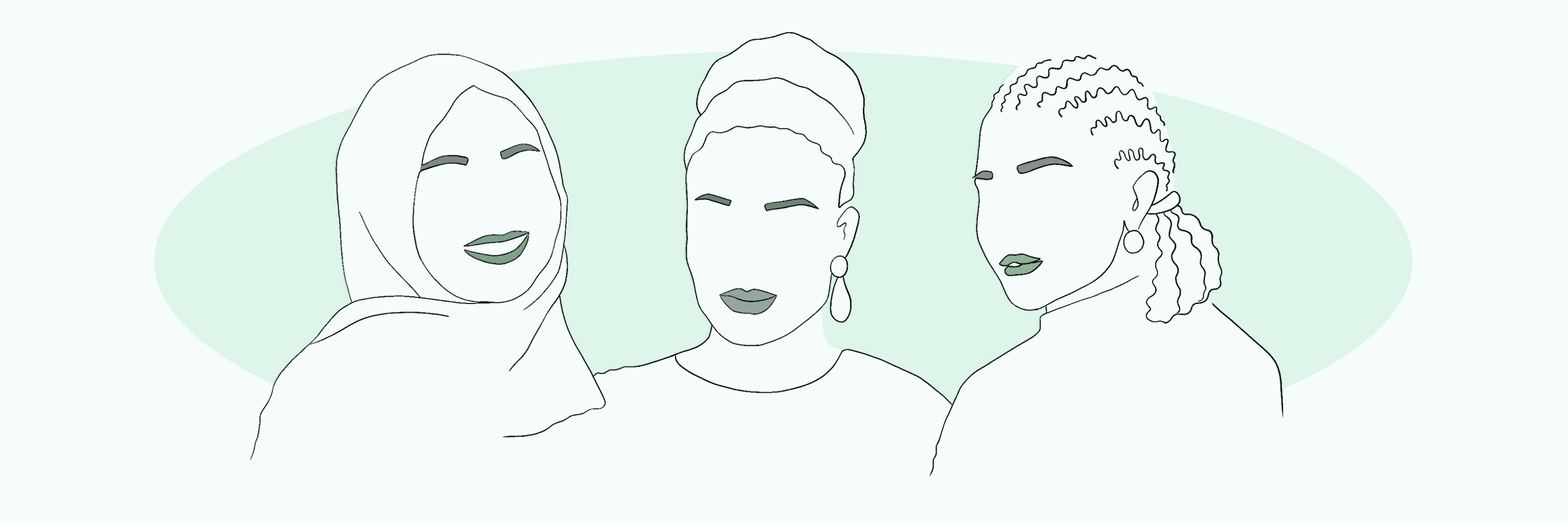“Thinking about power made me realise that racism was about so much more than personal prejudice. It was about being in the position to negatively affect other people’s life chances.”
– Reni Eddo-Lodge, 2017
Racism in workplaces
Racism must be addressed in every work community. Everyday racism is not necessarily intentional or conscious, which is why companies must provide access to information. Supervisors have a responsibility to set an example for the whole team.
Making an equality plan and actively updating it every year is a good starting point for companies of all sizes.
Misconceptions about racism
There are many erroneous impressions about racism that prevent us from understanding its true nature and diversity. Before we will get into this, it is good to go through the ways of thinking that hinder understanding.
1. Reducing racism to a good/bad phenomenon
If racism is perceived only through a dual way of thinking, our ability to understand its structure will be blurred. It is typical of this way of thinking that you feel someone is insulting your goodness if you are called a racist. This will probably lead to a strong defensive reaction, and the conversation will stop.
2. Understanding racism only as interpersonal events
If you feel that racism is only an interpersonal event, you are completely ignoring perhaps the most harmful aspect of racism – structural racism.
3. A good cause cannot end up in a bad result
It is extremely important to be aware that even though you may have good intentions when doing something, you can still hurt someone or cause trauma. This way of thinking leads to the underestimation and invalidation of experiences, which can cause minority stress, for example.
4. Colour-blind thinking
In the context of racism, a colour-blind person thinks everyone is equal, whether they are white, brown, black or purple. This is a well-intentioned idea, but then you will close your eyes to the fact that people are actually being treated differently because of their supposed ethnicity or skin colour. If we are unaware of racism, we cannot intervene when it happens.
5. “I’m not a racist, because I have a brown friend”
This way of thinking goes hand in hand with the notion that racists are only those who cannot even tolerate brown people in their vicinity. Friendship or a romantic relationship does not prevent racist thinking or change the norms in our society.
What is racism?
Racism is an organised power structure that is enabled by the concept of race and racialisation. It is a multidisciplinary system in which politics, customs, culture and norms, among other things, maintain power structures according to which certain groups of people are inferior to others.
Racism doesn’t go both ways. It’s always supported by the power structure.
How does racism manifest itself in practice?
To better illustrate the diverse nature of racism, we can divide the phenomenon into three groups: everyday racism; cultural racism; and structural racism.
Everyday racism
In addition to hostile shouting and name-calling, there are also micro-aggressions, exoticisation and patronising attitudes. All intentional, unintentional, verbal and non-verbal communication and actions that are perceived as racism.
Cultural racism
A very essential part of maintaining the racial power system and normalising racism. Appears in jokes, songs, products and promotional images with racialising and othering impact, for example.
Structural racism
Concealed and open racism in social norms, practices and structures. Perhaps the most dangerous form of racism, because it discriminates against people’s opportunities in life.
Structural racism includes guiding brown persons against their will and wrongfully to sectors with labour shortages, and challenges in finding work and housing due to foreign names.
Whiteness as a power system
Whiteness refers not only to the colour of the skin, but to an ideology that favours those who meet the white standard at the expense of the racialised.
The white standard can be illustrated by the fact that Finns are often perceived as white. Everyone who does not fit the standard is considered a foreigner, regardless of whether the person is a native Finn or not.
White privileges
People who meet the white norm enjoy privileges, often without even knowing that they are privileges. It may be uncomfortable to examine one’s own privileges and invisible structures, but it is necessary for equality to become a reality.
A white person – have you ever had to think about these things?
| Do you always feel you belong in public places? |
| Have you ever had to wonder what kind of reaction your name is causing? |
| Can you be late without being blamed for your ethnicity? |
| Can you be sure that your children’s textbooks will cover their reality? |
| Can you ignore the problems of minority groups? |
| Do you ever have to speak collectively for all white people? |
| Do you ever get asked for the collective opinion of all Finns? |
| Can you tell people are staring at you in the street? |
| Can you go to a shop without a salesman or a security guard following you? |

Racialisation
Racialisation is a process that leads to racist activities. It associates people with negative hierarchies, prejudices and assumptions due to their skin colour or their supposed ethnic background, for example. The starting point is that people with certain characteristics differ fundamentally from the main population.
The ultimate purpose of segregating groups of people is to justify the unequal distribution of power. It is a historically constructed relationship of subordination, rooted in colonialism.
Due to the negative nuances associated with the word ‘racialised’, the term ‘brown’ is often used as its synonym. The term ‘brown’ does not refer to the skin colour either.
Microaggressions
Microaggressions are small and common everyday behaviours that can occur either intentionally or unintentionally. The most common forms are racism and sexism.
In the case of racism, these are messages of a hostile, degrading, othering or negative nature based purely on racialisation. They can be either verbal or non-verbal messages or actions.
Three forms of microaggression
Microassaults | Racialising assumptions. Verbal and non-verbal. |
Microinsults | Messages that convey clumsiness, insensitivity, or that have a degrading tone. |
Microinvalidation | Messages that exclude, deny or invalidate thoughts, experiences and feelings, or question an individual’s inclusion in a particular group. |
Verbal examples:
| ‘Hey, you speak Finnish very well.’ |
| ‘You articulate very well.’ |
| ‘You’re not like other brown people.’ |
| ‘Is that your real hair? Let me touch it.’ |
| ‘Your name is too difficult. Do you have a nickname?’ |
| ‘Is the child’s father in the picture?’ |
| ‘Do all your children have the same father?’ |
| ‘You’re so exotic.’ |
| ‘You’re so dark and spicy.’ |
Non-verbal examples:
| You hold your bag more tightly when a brown person walks by. |
| A shop employee who follows a brown person. |
| You lock the car door when a brown person walks by. |
| A luxury shop employee who expects that a brown person has come in just to look around. |
| A full bus in which no one is sitting next to a brown person. |
| A taxi that doesn’t pick up a brown person. |
| Parents who do not allow their children to play with the children of brown families. |
Unconscious bias
Microaggressions in particular are often based on an unconscious bias. This means the assumptions we use to quickly categorise people. They are shortcuts for our brain, influenced by social, cultural and religious norms. These shortcuts lead to prejudice and stereotypes, which in turn can lead to discrimination.
Ultimately, we judge others and draw conclusions from them before we really know anything about them. Everyone has biases. It’s important to recognise them and not let them guide our behaviour.
Biases are not just about race, but they may be the easiest to see. If you look at another person, you will notice the colour of the skin, maybe the sex. However, you cannot see sexuality, where the person was born, citizenship, age, whether they have children, their place of residence, bank account balance, thoughts about religion, political orientation, education and so on. All these affect our assumptions and prejudices against others.
Because biases are shortcuts that form in our heads very quickly, you can begin to identify them by taking a closer look.
Examples
Can you catch yourself having biases before they lead to action?
Let’s say you’re hiring a CEO.
| Is your first image a man in a suit? |
| Did you question your assumption at all? |
| Should you? |
‘I keep telling my grandkids to date that nerd at school. He could become Mark Zuckerberg.’
| The assumption is that successful tech entrepreneurs are nerds at school. |
| The assumption is that nerds are smart and will become successful. |
| The assumption is that the grandchildren cannot become successful technology entrepreneurs themselves. |
| The assumption is that the nerd is a man or a boy. |
| The assumption is that the grandchildren want to date a man. |
Addressing racism
Racism must always be addressed, whether it is a more visible racist attack or presents itself as microaggression, especially if you represent the main population yourself.
If you intervene when spotting racism, do not do so in a way that puts the victim at greater risk. Helping is only useful when you are confident enough to be an asset to the oppressed.
The one representing the majority must follow the example of the victim of racism. Don’t play the saviour if the oppressed person just wants to ignore the situation.
Guidelines for dealing with racist situations
Anyone who experiences racism must never be questioned, patronised or invalidated, and no one’s behaviour must be justified in any way.
The supervisor plays an important role in addressing the one showing racist behaviour. The supervisor also creates a culture in which people’s experiences are taken seriously and lead to action. Failure to address discrimination easily creates a culture that normalises racism.
Workplaces should designate a person responsible for equality and discrimination, and all instances can then be reported to this person. When designating a person, it is important to ensure that they understand the structural nature of racism and the experiences of those in a minority.

Did someone call you a racist?
US author Ijeoma Oluo lists instructions for racist microaggression situations in her book So You Want to Talk About Race (2020).
It is important that the supervisor learns both these instructions to understand the one experiencing racism and advise the one behaving in a racist way.
Advice for the one behaving in a racist way
| Stop | Before you say anything, stop and take a deep breath. Remember that your purpose is to understand the person with whom you are interacting. |
| Reflect on your own behaviour | Do I really know what I said or did? Why did I make a comment or a gesture? Would I have said the same thing to someone who does not represent the same ethnic group as me? Did I feel threatened or uncomfortable in the situation? Why? |
| Understand | Don’t start pointing out that you meant well. The point is that someone got hurt. It’s not about you. It’s about the other person. |
| Keep the bigger picture in mind | For someone who experiences racism, it isn’t just this one situation. Minority trauma is like a snowball effect: it accumulates over the years and has a long history. |
| Research | Accept any feedback you receive and research it further in your own time. Don’t expect to be trained by others. |
| Apologise | You’ve done something that has hurt someone else. Apologise, even if you don’t fully understand why or how. It’s the least you can do. |
Advice for those experiencing racism
| State what happened. | State directty what has happened. Your experience is genuine, and you have the right to name it. |
| Ask some uncomfortable questions. | Since microaggressions are not necessarily intentional, questioning an action may lead to more extensive soul-searching. For example, ask: ‘Why did you say (or do) that?’ or ‘I don’t understand – can you clarify?’ |
| Ask more uncomfortable questions. | If someone gets nervous or says they didn’t mean any harm, keep questioning them. ‘Would you have said this if I was white?’, ‘How exactly should I have understood what you said?’ |
| Emphasise that good intentions mean nothing. | ‘You may not have wanted to hurt me, but you did. This happens to brown people all the time. If you don’t mean to offend, you stop doing it.’ |
| Remember, you’re not crazy, and you have every right to bring it up. | ‘I can see that you’re uncomfortable with this, but this is a real issue, and it needs to be addressed.’ |
Zero tolerance of racism
Many workplaces declare that they have zero tolerance of racism. This may be problematic. The declaration may give the impression that the matter has been dealt with, and that it no longer exists.
If your workplace has declared a zero-tolerance racism policy, please make sure that other relevant policies and practices are in place and up to date.
Racism causes trauma
Understanding racism as a cause of trauma is important. Research has shown that repeated experiences of racism can lead to post-traumatic stress disorder. Persistent traumatic experiences affect psychological and physical wellbeing.
Workplaces should invest in the possibility of low-threshold therapy or other mental assistance.
Minority stress
Minority stress refers to the additional ongoing mental stress experienced by a marginalised group as a result of both direct and structural experiences of discrimination, stigmatising attitudes, prejudices or fears of them.
Stress is of a chronic nature, and it is caused by social and societal structures.
Due to an environment that discriminates and promotes othering, someone belonging to a minority may perceive the environment as threatening. They may constantly fear or anticipate discrimination.
This can lead to hiding and concealing one’s own identity, which in turn further increases stress.
Minority stress can increase mental health problems, eating disorders and social exclusion, which is why it is extremely important to recognise the term.
Sources
Experts:
- Jasmin Assulin, deidei Oy
- Naomi Holopainen, ATAA Agency
Books:
- Andersen, Heidi R. 2021. Diversity Intelligence: How to Create a Culture of Inclusion for Your Business. Chichester: Wiley.
- Eddo-Lodge, Reni 2017. Why I’m No Longer Talking to White People About Race. London: Bloomsbury Publishing.
- Gordon, Stacey A. 2021. Unbias: Addressing Unconscious Bias at Work. New Jersey: Wiley.
- Hubara, Koko 2017. Ruskeat Tytöt. Helsinki: Like Kustannus Oy
- Keskinen, Suvi, Seikkula, Minna & Mwkesha, Faith 2021. Rasismi, valta ja vastarinta: rodullistaminen, valkoisuus ja koloniaalisuus Suomessa. Tallinna: Gaudeamus
- Oluo, Ijeoma 2019. So You Want to Talk About Race. New York: Seal Press
Online material:
- Carter, Robert T., Johnson, Veronica, Roberson, Katheryn, Mazzula, Silvia L., Kirkinis, Katheirne, Sant-Barket, Sinead 2016. Race-Based Traumatic Stress, Racial Identity Statuses, and Psychological Functioning: An Exploratory Investigation. https://www.researchgate.net/publication/309319476_Race-Based_Traumatic_Stress_Racial_Identity_Statuses_and_Psychological_Functioning_An_Exploratory_Investigation
- Jaskari, Onni & Keski-Rahkonen, Anna 2021. Vähemmistöstressi uhkana seksuaali- ja sukupuolivähemmistöjen terveydelle. https://www.duodecimlehti.fi/duo16384
- Kettumäki, Rosa 2019. “Ahdistusta, masennusta ja itsesyytöstä” – rasismin kokeminen voi aiheuttaa vakavia mielenterveysongelmia, sanoo terapeutti Michaela Moua. https://yle.fi/uutiset/3-10859180
- McIntosh, Peggy 1988. ”White Privilege and Male Privilege. https://nationalseedproject.org/images/documents/White_Privilege_and_Male_Privilege_Personal_Account-Peggy_McIntosh.pdf
- Yhdenvertaisuusvaltuutettu. https://syrjinta.fi/rasismi
